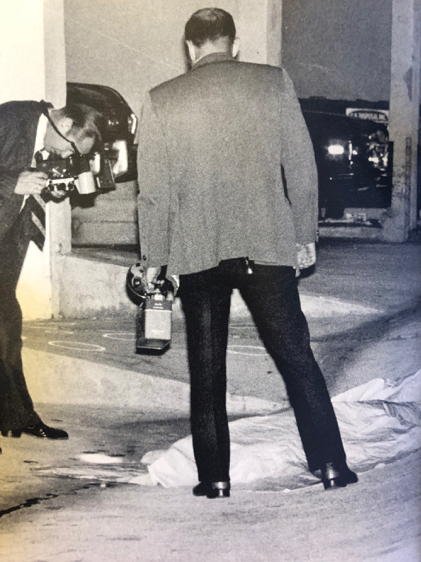In the carport of his West Hollywood apartment, Sal Mineo, an iconic American actor, was tragically stabbed in the heart. The assailant fled the scene, leaving behind a legacy of mystery and unanswered questions. This dramatic event pulled a New York journalist into the world of Hollywood as she delved deep into the life and untimely death of Sal Mineo, forming the basis for this historical fiction.
The Tragic End of Sal Mineo
On February 12, 1976, the 37-year-old actor arrived home after a rehearsal. As he parked his car, he was brutally attacked and stabbed to death behind his West Hollywood apartment building. At the time, Mineo reflected on his career with mixed emotions: “It would be easy to blame Hollywood for typing me and forcing me to play the same role over and over. For a while, I did. But the truth is that I knew what I was doing. I was enjoying myself. I was making money.”
Salvatore Mineo Jr. (January 10, 1939 – February 12, 1976) was a celebrated American actor best known for his role as John Plato Crawford in the drama film Rebel Without a Cause. His performance earned him two Academy Award nominations, cementing his place in cinematic history. However, Mineo's life ended abruptly when he was found fatally wounded in a narrow alleyway near the carport where he had parked his 1973 Duster before heading inside his apartment.
A Legacy of Talent and Tragedy
James Dean and Sal Mineo were emblematic figures of 1950s Hollywood, renowned for their exceptional talent and profound influence on popular culture. While Dean’s life was cut short in a tragic car crash at the age of 24, Mineo’s death left an equally haunting mark on the industry. For two weeks in the fall of 2017, bestselling author James Ellroy revisited the 1976 murder of Oscar-nominated actor Sal Mineo. Writing for The Hollywood Reporter, Ellroy explored police files from 1976 and recounted the intricate two-year investigation led by detectives who pursued Mineo’s killer from West Hollywood to Michigan.
Mineo’s murder remains a subject of fascination and speculation. Fellow January Capricorn and Queer Saint Sal Mineo was born in 1939 and tragically lost his life in 1976 at the age of 37. Some argue that his death was not merely a random act but rather a consequence of societal pressures forcing him to conceal his true identity. Social media posts have highlighted these themes, such as one by brucelabruce on January 10, 2025: Fellow January Capricorn and Queer Saint Sal Mineo was BOTD in 1939 and died in 1976 at the age of 37. Actually, he was slowly murdered by being forced to pretend to be straight during studio publicity shoots.
An Unforgettable Career
Celebrating Sal Mineo’s legacy involves acknowledging his groundbreaking contributions to both film and theater. Born Salvatore Mineo Jr. to Josephine and Sal Sr., who emigrated from Sicily, Mineo grew up in a tough Bronx neighborhood. Despite being expelled from parochial school and joining a street gang by the age of eight, his mother enrolled him in dance classes, setting him on a path toward stardom. By the time he prepared to open a play in Los Angeles in 1976 alongside Keir Dullea, Mineo had already established himself as one of Hollywood’s most memorable actors.
His early career included unforgettable performances in films like Exodus, where he portrayed complex characters with depth and authenticity. Yet, Mineo faced challenges in an industry resistant to openly gay actors. His refusal to deny his sexuality ultimately impacted his career trajectory, though it also solidified his status as a trailblazer for LGBTQ+ representation in entertainment.
Unanswered Questions Surrounding His Death
Witnesses reported hearing Mineo’s cries for help as he lay bleeding in the parking alley. Neighbors like Raymond Evans rushed to assist him, but it was too late. Detectives discovered that Mineo’s wallet remained intact, raising questions about the true motive behind the attack. The alleged perpetrator, a black man named Kenneth Williams, claimed ignorance of Mineo’s fame and pointed to robbery as the motive. However, conflicting accounts emerged, including reports of a tall white man fleeing the scene. These inconsistencies fueled ongoing debates about whether Mineo’s sexuality played a role in his demise.
In a post on social media, brucelabruce noted, The evidence that convicted Mineo’s killer was arguably circumstantial. Witnesses saw a different suspect fleeing the area, leading to enduring speculation about the real motives behind the crime. Such discussions underscore the complexity surrounding Mineo’s case and highlight the broader issues of bias and prejudice prevalent in the era.
A Final Reflection
Sal Mineo’s life and death serve as poignant reminders of the challenges faced by queer individuals in the entertainment industry. Though his career was tragically cut short, his impact endures through his work and the conversations sparked by his story. As we reflect on his legacy, it is essential to honor his contributions and advocate for greater inclusivity in all facets of society. In the world of cinema and beyond, Mineo remains a symbol of resilience and courage.

